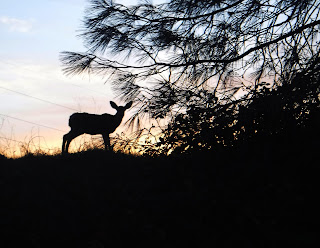It was inspiriting to hear the regular dip of the paddles, as if they were our fins or flippers, and to realize that we were at length fairly embarked... Henry David Thoreau,
It's the primary piece of the paddle. Half the time unseen buried in water, the other half, it's flying above your head. It's designed to move as much water as it can quickly and smoothly by catching and pushing the water away and around its edge. In doing so, it creates a phenomenon of physics in the water beneath your boat. It's that force of resistance, that propels the boat your forward.
Kayak blades come in different shapes and sizes either being flat or curved. The bigger high angle blade means the paddler will be pulling more water while low angle blades have longer and narrower blades. Experts say, typically, the folks looking for a big blade, are bigger and stronger individuals usually paddling heavy boats or looking for a good workout while out on the water.
In the past, symmetrical (flat) blades were the popular, however as the sport transformed, paddlers wanted to go further and faster, all while expending less energy. Asymmetrical blades with the top edge are slightly longer, resembling the wing of an airplane, were developed allowing water to effortless flow along each side of the blade
"Kayak blade shapes are continually evolving," wrote Brian Boyea of Aqua-Bound and Bending Branches in an e-mail, "Some of the original kayak paddles had squared edges on the blades. Since then, the blades have become rounded. The rounded edges help water roll off the blades evenly and prevent the edges of the blades from getting caught or snagged on anything that may be below the water’s surface."
Aqua-Bound is one the world's largest manufacturers of whitewater, touring, and recreational kayaking paddles, while its sister company, Bending Branches concentrates on making canoeing paddles. Leaders in making plastic-bladed kayak paddles, Boyea says, their engineers spend quite a bit of time designing blade shapes and prototypes. Typically it can take about 6-8 months to go from ideas to blade prototypes.
"Once they come up with a prototype they like," wrote Boyea, "We run it through a series of in-house tests to make sure the blade will stand up to the test that our paddles typically face. After some in-house testing, we send proto-type paddles out to trusted individuals for field testing. After running the prototypes through the paces, these individuals will give us all sorts of feedback. We’ll use that feedback to alter the blade shape and design as we see fit."
The biggest evolution in paddle blades has come in the form of their material make-up according to Boyea. Manufacturers are finding lighter and stronger materials such as fiberglass and carbon fiber to build enhance their blade's features.
"New blade shapes and designs are constantly being introduced to the market. Lighter and stiffer materials play a role in this as well. We just launched our new compression molded Whiskey and Tango performance kayak paddles." wrote Boyea, "Those blades are made up of compression-molded fiberglass and compression-molded carbon. These are the lightest blades we’ve ever designed. We’re excited to see where we can go next."
Paddling blade master, Sigurd Olson, proclaimed, "There is magic in the feel of a paddle and the movement of a canoe." He was right of course because it's all a disappearing act. The blade vanishes into the water, gliding the kayak forward, only to reappear an instant later. It will do that a thousand times and then thousands more while trekking across the water. It's the paddle's mojo.
Paddle Machine
Sure paddles are now lighter, stiffer, and more durable, but a California state senator wants to classify them as "machinery" that propel a vessel in an amendment to Section 651 of the Harbors and Navigation Code, relating to vessels.
Bill SB 1247, introduced by Senator Ted Gaines (R-El Dorado) last month, purposes that regulations governing vessels would define“machinery” as any sail, rigging, rudder, oar, paddle, or similar device used on a vessel. The bill would stipulate that any vessel that uses machinery in its operation is a mechanically propelled vessel.
Opponents feel this is the move to require all canoes, stand up paddleboards, and kayaks to be registered with the DMV like boats and jet skis with fees from $29.00 or $49.00 per year. Currently, in California, paddle craft is not required to be licensed.
Outside Adventure to the Max reached out to Senator Gaines's office via email and received no response to our inquiry.




























